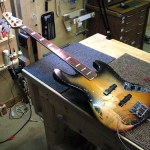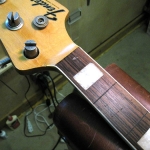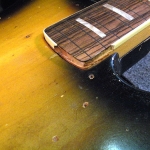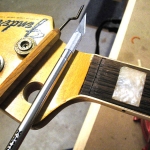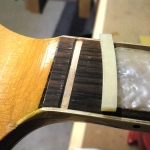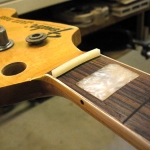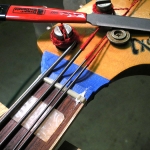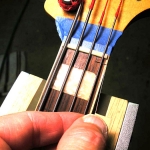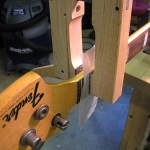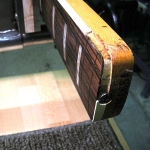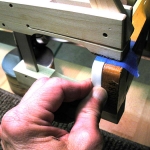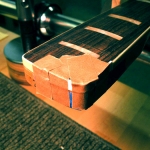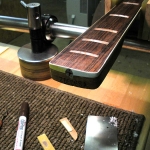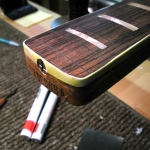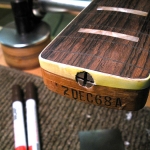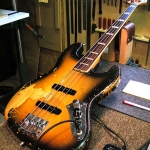 A customer brought me a very cool 1968 Fender Jazz Bass neck. The neck is fretless and- as the Beatles would say, “very strange”- it had no nut slot. There was also a piece of binding missing at the heel. The customer was interested in having the neck fretted, a nut made and installed, and the binding repaired. I was able to persuade him to leave the bass fretless, being hesitant to alter a vintage instrument. I agreed to do the nut installation and binding. I encountered a couple of other issues along the way. See the pictoral below for the details about this interesting job.
A customer brought me a very cool 1968 Fender Jazz Bass neck. The neck is fretless and- as the Beatles would say, “very strange”- it had no nut slot. There was also a piece of binding missing at the heel. The customer was interested in having the neck fretted, a nut made and installed, and the binding repaired. I was able to persuade him to leave the bass fretless, being hesitant to alter a vintage instrument. I agreed to do the nut installation and binding. I encountered a couple of other issues along the way. See the pictoral below for the details about this interesting job.
